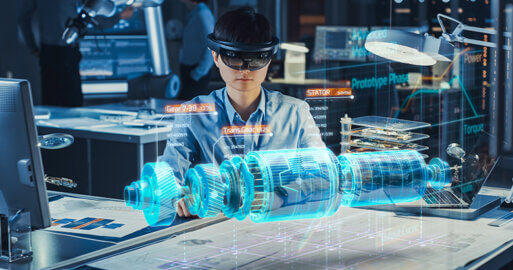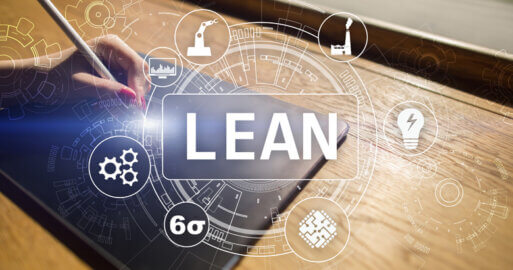What is Digital Twin Energy Management and Why is it Important?

Disruptive technologies have taken the world by storm, and businesses have responded by undertaking digital transformation journeys in order to evolve with these technologies in competitive marketplaces. In only 20 years, digital transformation has fundamentally changed many areas of business and life by integrating new digital technologies into all areas of the financial, healthcare and retail industries – to drive innovation, keep up with ever changing customer expectations and ensure resiliency. And now, with many global initiatives of achieving a carbon free energy sector, digital twin technology has emerged as an energy management solution for ensuring resiliency in the utilities industry.
Digital twins make energy management a breeze
As the utilities industry starts moving to greener sources of renewable energy, the complexity of today’s energy sector necessitates using digital twins for efficient energy management. Digital twin energy management is the process of planning, organizing and controlling digital twin technology, which is accelerating digital transformation at companies like General Electric.
Digital twins are real time digital counterparts that virtually represent physical objects in their physical environments, such as solar arrays and wind turbines. Digital twins provide immediate insights into the status and performance of the utilities infrastructure. As a digital twin obtains information about energy consumption across facilities in different regions, including weather data and distribution trends, grid operators can communicate in real-time with nearby cities to coordinate shortages or excesses in energy. Connectivity and feedback between IIoT sensors are vital for collecting data from the environment for further processing and analysis, and the value of this data will increase as environmental insights are gleaned from digital twin technology.
Integrate digital twins for predictive maintenance
In 2019, a Gartner survey revealed that 74 percent of organizations that are implementing (I)IoT projects plan to integrate digital twins for predictive maintenance by 2024. This means that 26 percent of those organizations have no plans for digital twin integration and instead still rely on reactive maintenance, which means that affected equipment is only serviced when problems occur.
Using sensor data that is continuously uploaded to the cloud, organizations can use machine learning algorithms to simulate what-if scenarios for monitoring errors and deviations. This kind of monitoring represents the cornerstone of Industry 4.0 manufacturing—predictive maintenance. With predictive maintenance, utility plant operators can predict when systems need to be serviced. To extend critical physical and software asset lifecycles, control costs and make efficient use of limited resources, businesses should look for a digital twin energy management solution that adds automation, (I)IoT, analytics and AI into a predictive maintenance strategy.
Optimize digital twin energy management with integration
The digitalization of the utilities industry offers opportunities for new, efficient and smart ways of doing business, such as using digital twin technology. Indeed, one of the best ways to monitor power consumption and control energy sensors is to use a digital twin for energy management. The key features to look for in a digital twin energy management solution include:
- Remote monitoring – the ability to observe real‑time energy consumption patterns and issues for informed and accurate decision‑making
- Automation capabilities – the ability to schedule and automate motion sensors and thermostat settings for efficiency, safety and temperature consistency
- Flexibility and scalability – the ability to configure a solution that can adapt to fluctuations in growing energy needs
- Data and network security – the ability to protect sensitive information and intellectual property, especially when recording and transferring data via cloud technology
A centralized integration platform can provide all the key features required in a digital twin energy management solution.
Act quickly to changes in the utilities industry with integration
Digital twin technology enhances energy efficiency, optimizes asset management and reduces environmental impact. The management of digital twins in the utilities industry requires collaboration and constant communication between equipment, suppliers, applications, systems and people, which is why using a business integration platform is more important than ever.
Increasing regulations and increasing competition from new entrants in the renewable energy market mean that utilities providers must become smarter in how they operate, especially because the market is projected to reach $1,977.6 billion by 2030. For many utility companies, the ability to act quickly is directly dependent on the agility that their IT department can support in terms of integration and digitalization.
Download our whitepaper to learn how the SEEBURGER Business Integration Suite (BIS) can help you act quickly with seamless connectivity for onboarding partners, automating tasks and making all data accessible in the right channels at the right time. SEEBURGER BIS is the one integration platform trusted by more than 10,000 companies since 1986, supporting all digitalization requirements for the utilities industry with modular solutions and high-SLA cloud services.
Thank you for your message
We appreciate your interest in SEEBURGER
Get in contact with us:
Please enter details about your project in the message section so we can direct your inquiry to the right consultant.
Written by: Tobias Hevekerl
Tobias Hevekerl joined econtea GmbH in April 2016 and is a senior consultant, supporting utilities customers in project management, writing product requirement documents, running proofs of concept, optimising processes and product and test management. He advises the SEEBURGER product management team on the company‘s Trade Reporting Solution and RRM+. Following a traineeship in the commercial arm of an energy company and a degree in business informatics, from 2007 Tobias Hevekerl worked for two consultancies where he specialised in the utilities sector. In his free time, he likes to go hiking, jogging or cycling in the countryside. He also has a taste for adventure. He is a versatile sportsmen, enjoying mountain biking, climbing, zip lining, wall running, tackling high ropes courses, football and – unusually for a North German – skiing and snowboarding.





